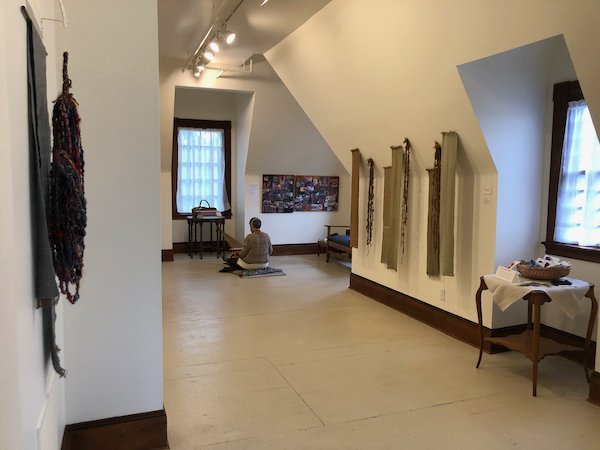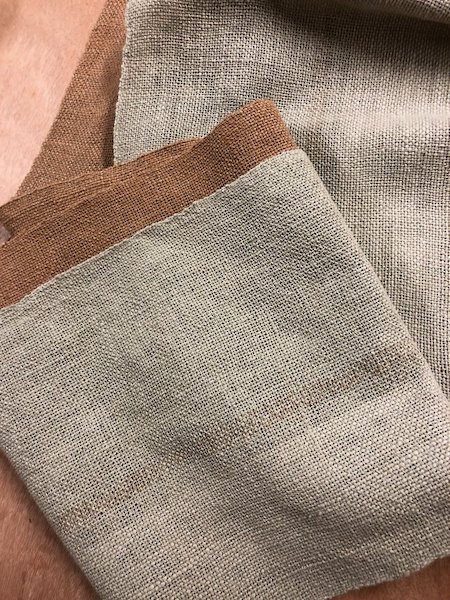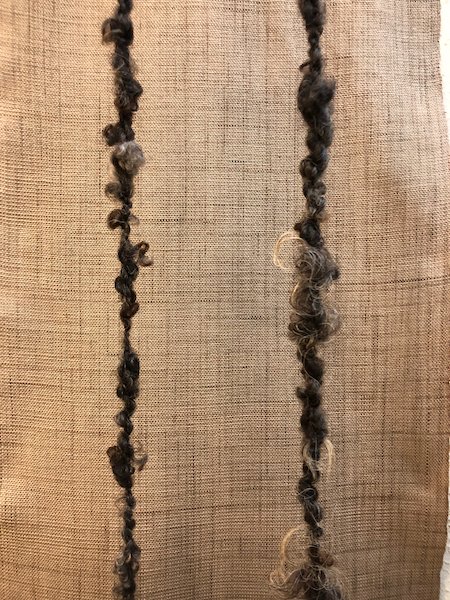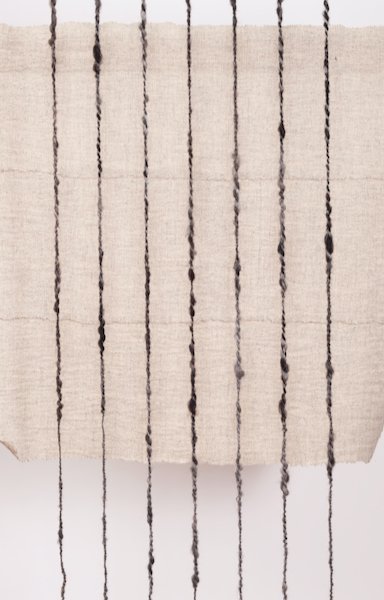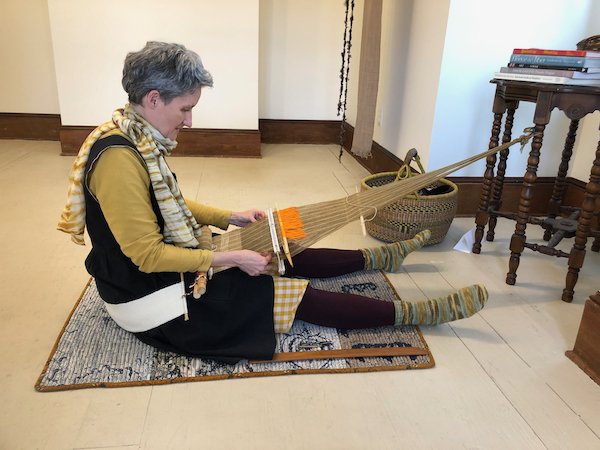I’m just going to start with the piece that was conceived for the space, as a way of introducing my art show, which has been up for some time, and has two more weekends before closing on May 1. The show is called Yarn, Cloth, and the Pull of the Earth, and it’s hanging at the PNW Quilt & Fiber Art Museum in La Conner, WA. It’s quite an experience to have a space that I can fill all by myself - an interesting, faceted, space, since it’s the third floor of a historic Victorian house.
One room of the show, on the upper floor of the museum, with me weaving by the far window.
The walls tilt inward, about 5’ from the floor, and this was actually perfect for what I wanted to do. Most of the pieces in the show involve two layers: a woven ‘ground’, hung against the wall, and suspended ‘lines’ of handspun yarn, which need to be higher and a few inches in front of the ground. Without this tilt in the wall, it would have been tricky to figure out, but the space had what I needed, so I could just hang the work. The colored cotton panels with bunches of wool in between make up the one piece that I made specifically for that wall, after visiting the space to scope it out. In this sense, “taking up space” means I used the space almost as a medium for the work, taking it up as one takes up a tool in the hand.
Handspun, handwoven cotton in natural brown and green.
The woven cotton is all handspun, essentially whatever I had ready to weave, supplemented with some new brown and green fiber from Vreseis and Traditions in Cloth. It’s all two-ply yarn, and I plied same colors together until I ran out, then some skeins were mixed, then I likewise wove until I ran out, so the color changes in the weavings happen by chance. They are interspersed with walnut-dyed wool, a gift from Devin Helman, spun rough with no prep and plied back on itself. In several of the pieces for this show, I’ve been exploring the expressive potential of strands of handspun yarn, the way they are like drawn lines or brushstrokes, handmade marks that have unpredictable voices of their own.
Coffee Lines - a handspun yarn based on the theme of coffee, hanging at the top of the stairwell before you enter the exhibit.
Handspun wool lines, with handwoven ground of walnut-dyed commercial 10/2 cotton.
Handspun wool lines (rescue sheep’s wool), handwoven ground of commercial warp, handspun Navajo Churro weft.
Taking up space is the real value of the show for me. Having this opportunity to fill two rooms with my work, my priorities, my ideas about what is important, and hoping to help others appreciate the wonder of yarn and cloth. The nicest moments have been just sitting in there, weaving in the light through the window.
Detail of weaving in progress, all cotton, at the museum.
A special day when I coordinated well with my weaving. Thanks to Dana Weir for the photo.
View from room 1 to room 2, through white lines. Cotton Strips on the right - more handspun cotton, in white and grey.
Caravan handspun, on ground of linen warp, handspun wool weft.
My Caravan yarn got to come out and play, hanging with a new woven ground. The pieces are all interacting with one another, creating something with their crosstalk.
I also included some microscopic images of fibers, taken when I was doing conservation study and using polarized light microscopy to identify fiber content. The images were so beautiful, I wanted them to be shown as artwork - and they emphasize the theme of looking closely. There is more I could say, but it has taken me long enough to post about this show, and I’d like to leave this here today.

